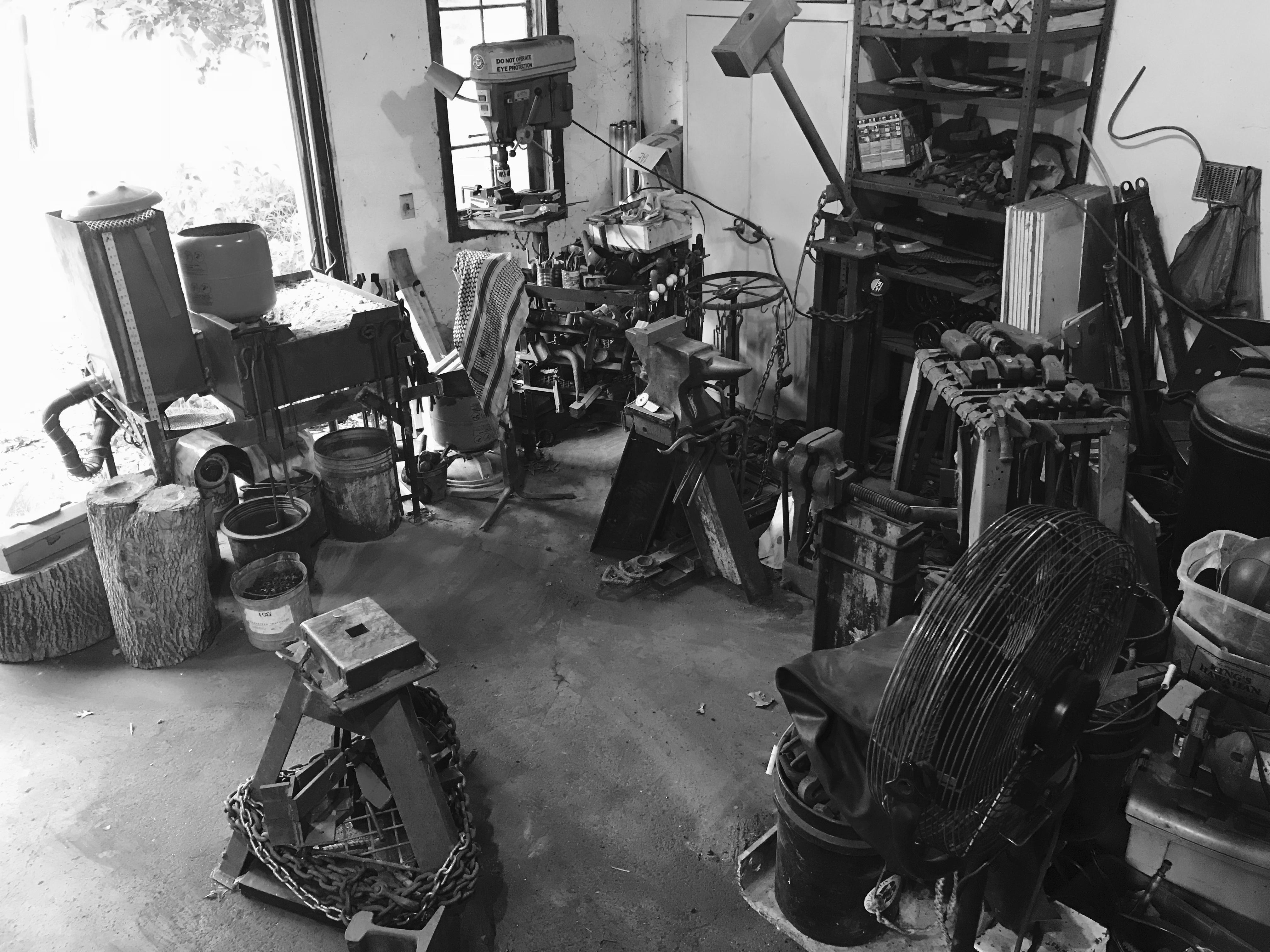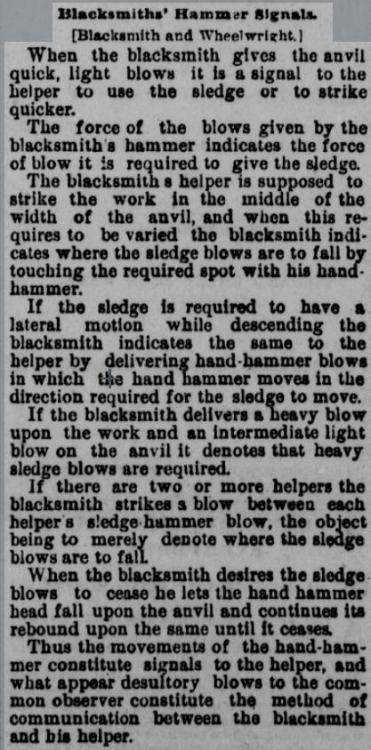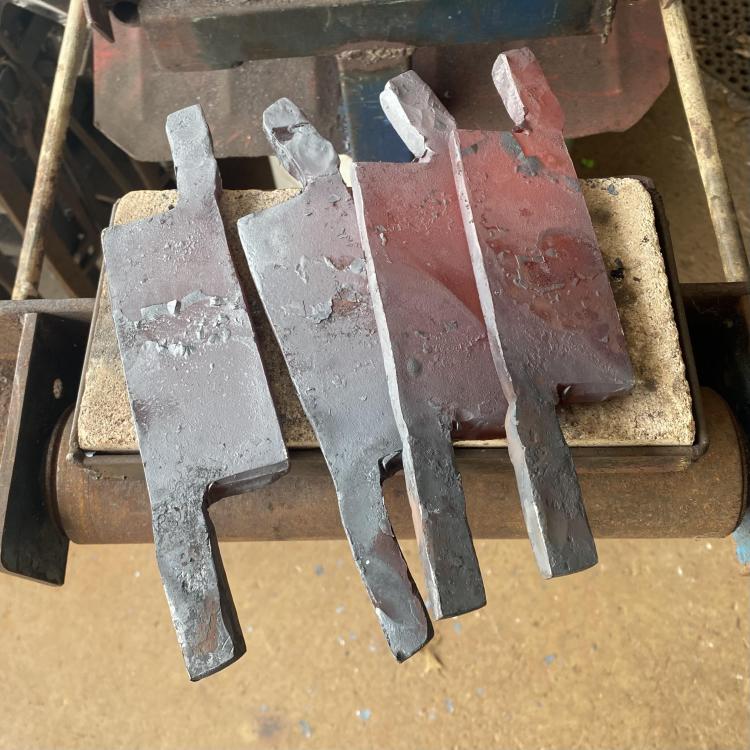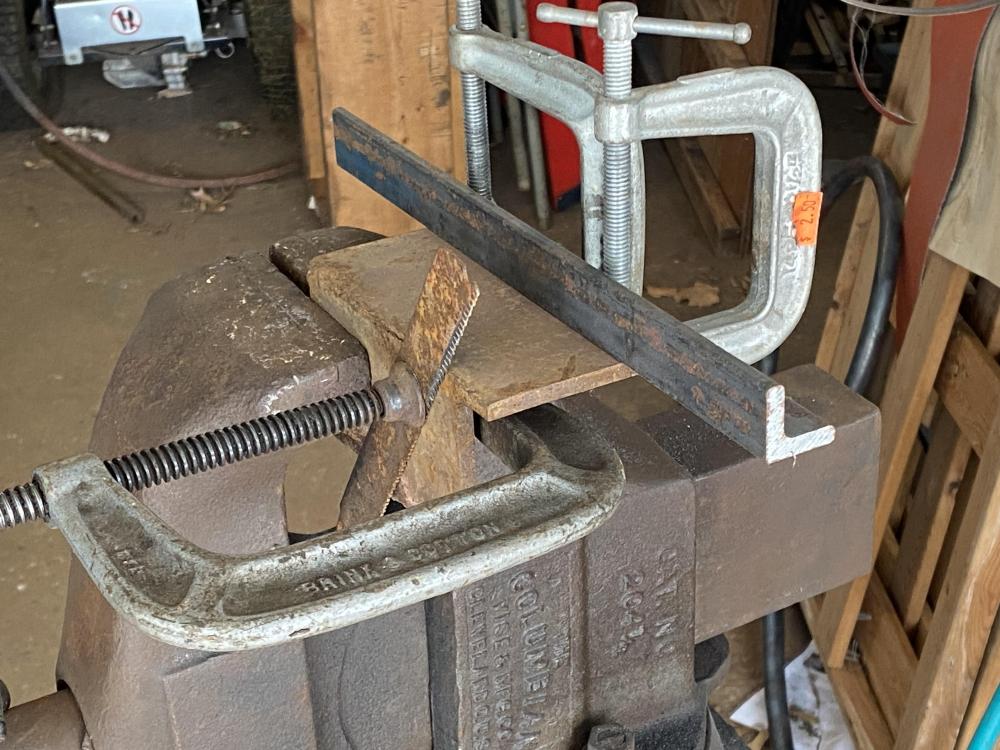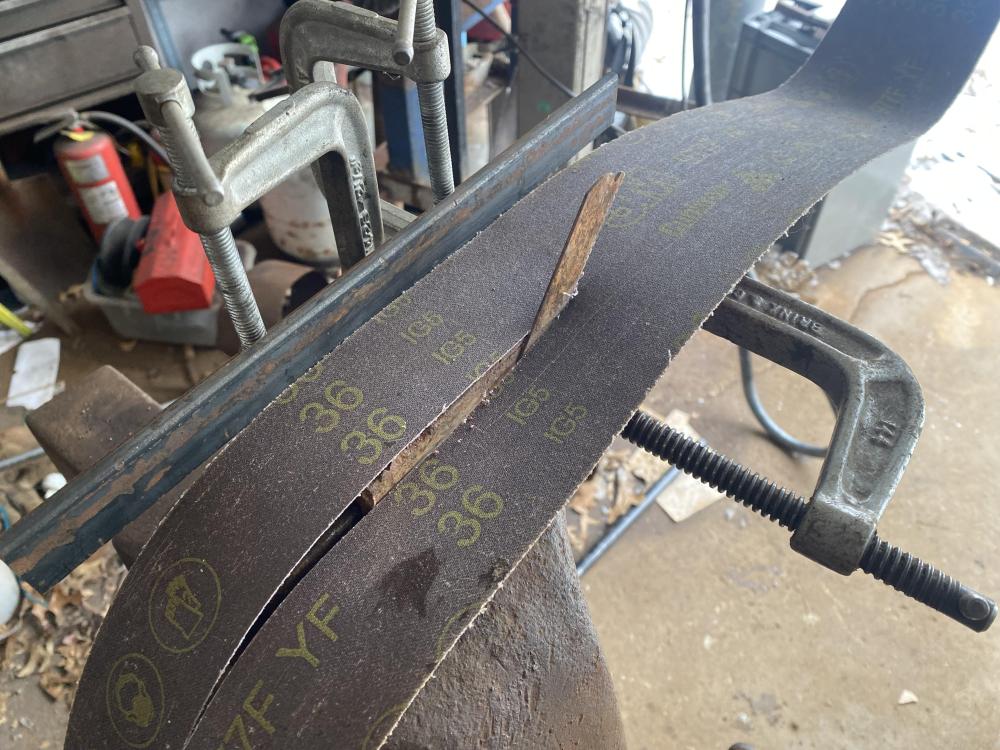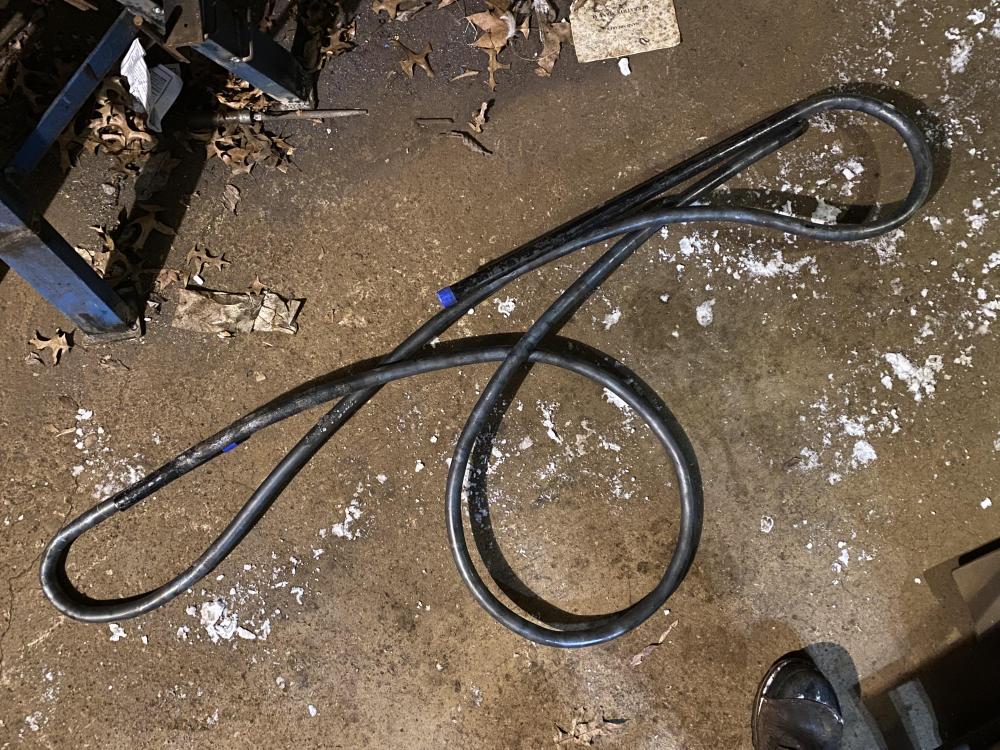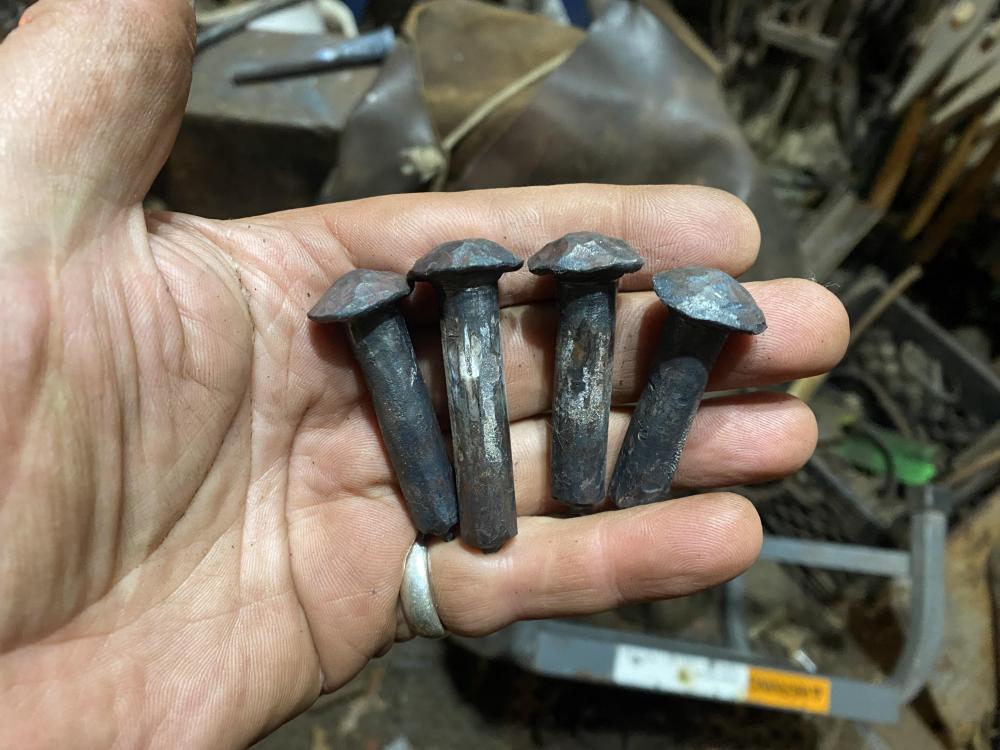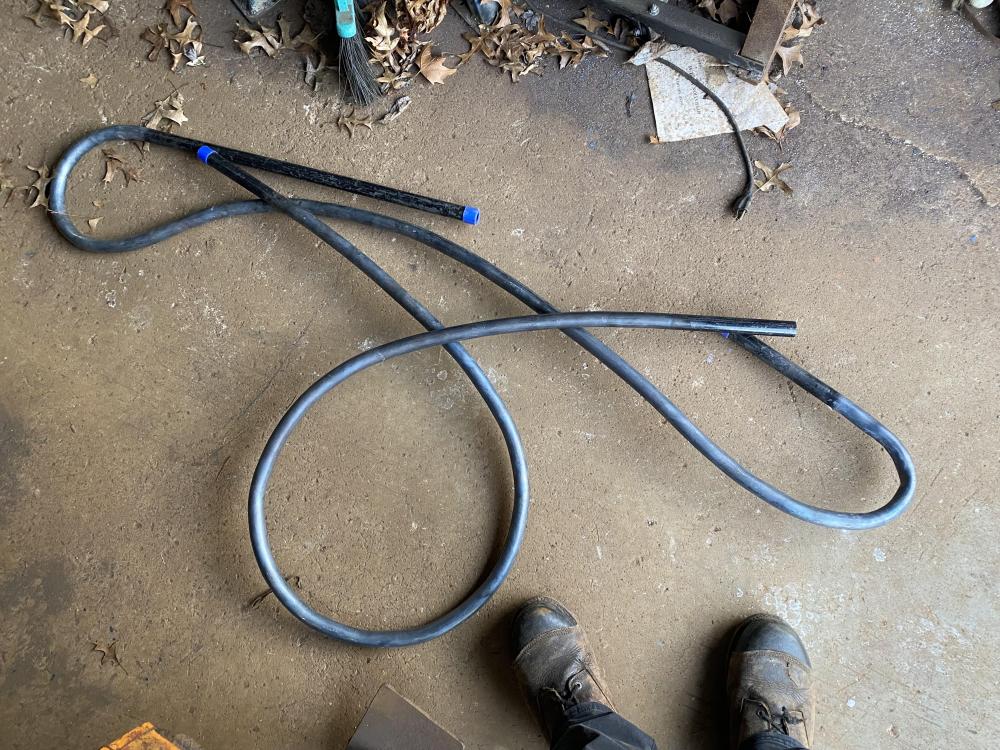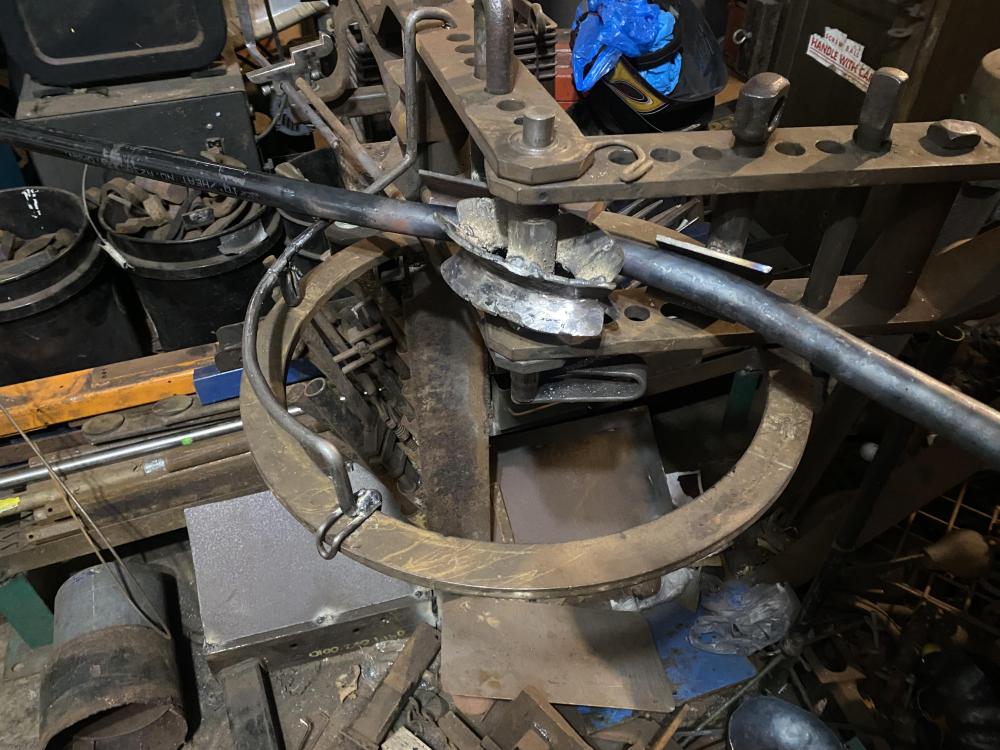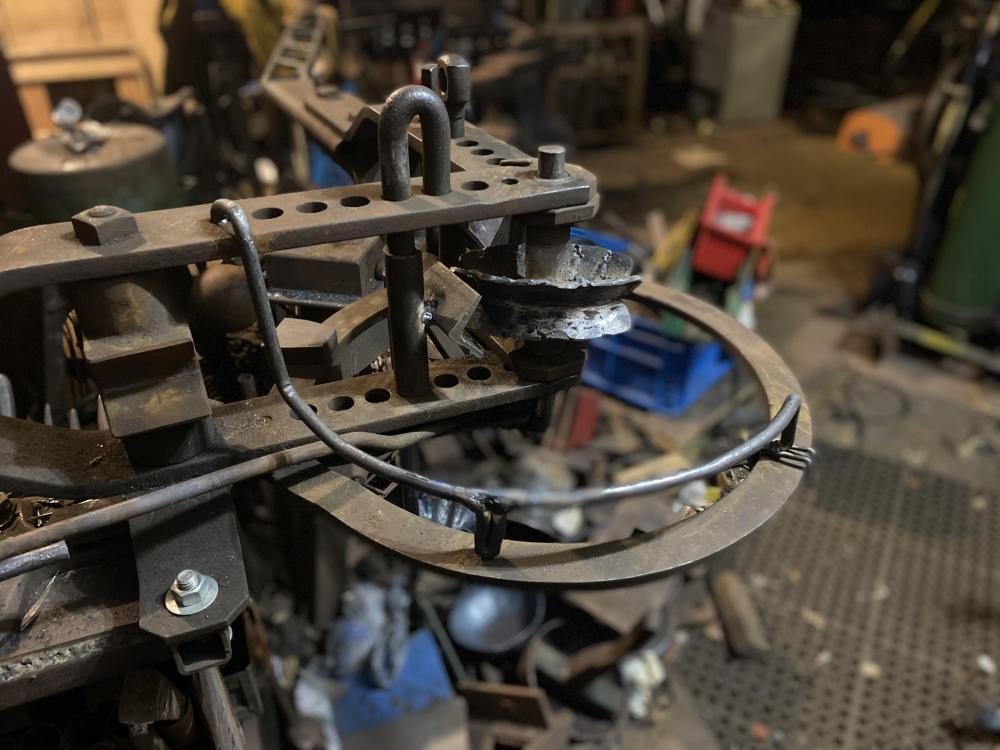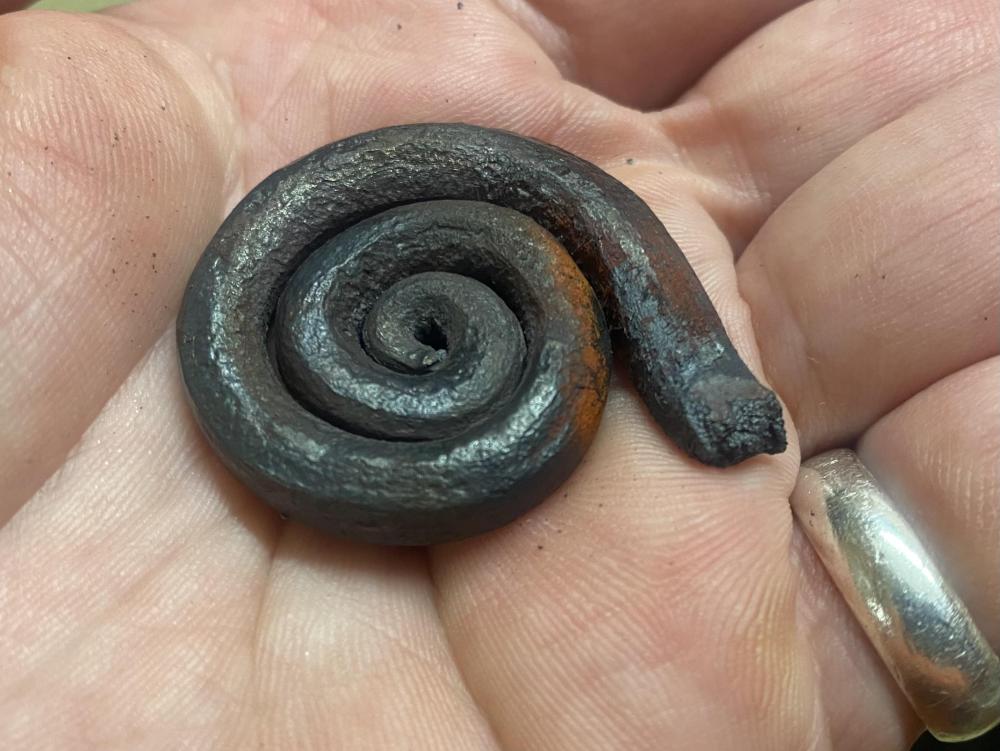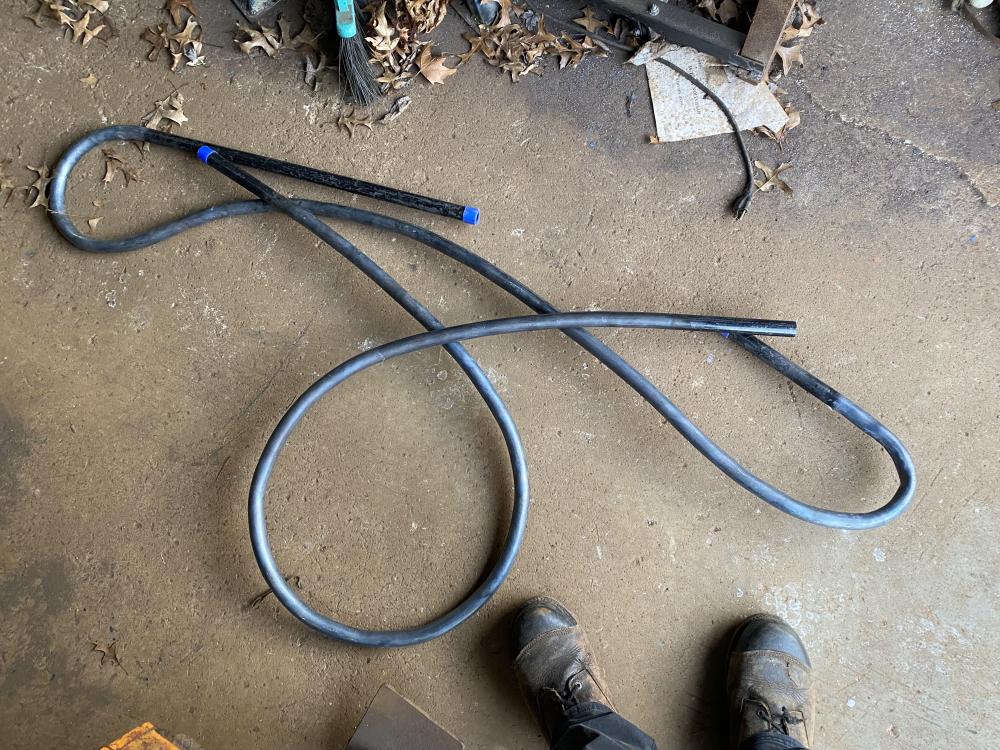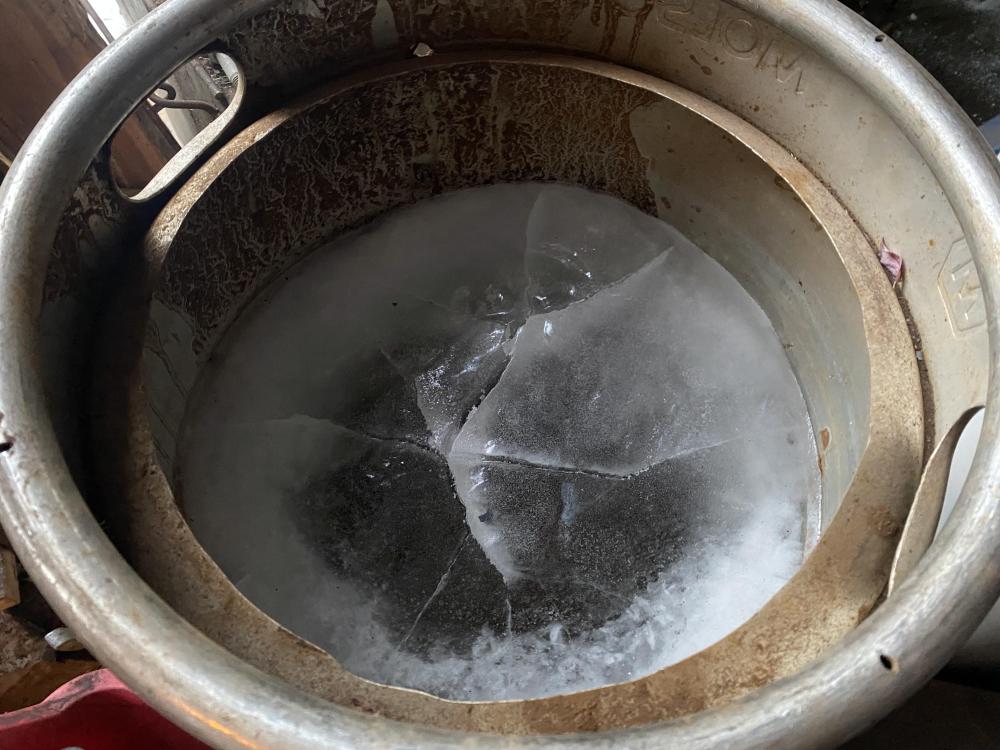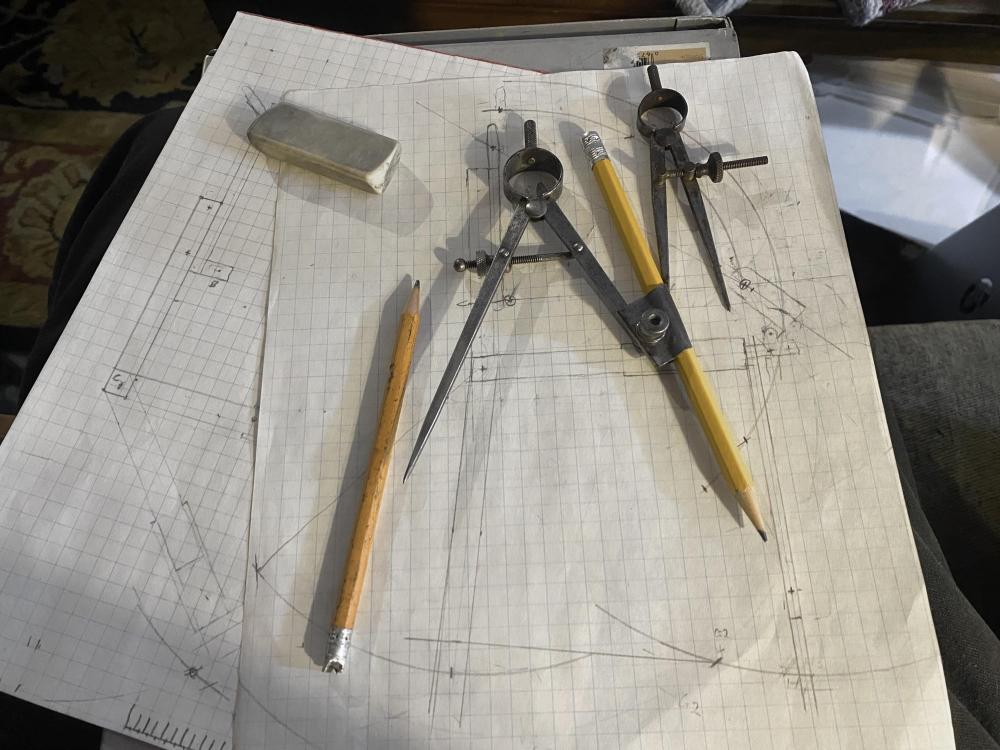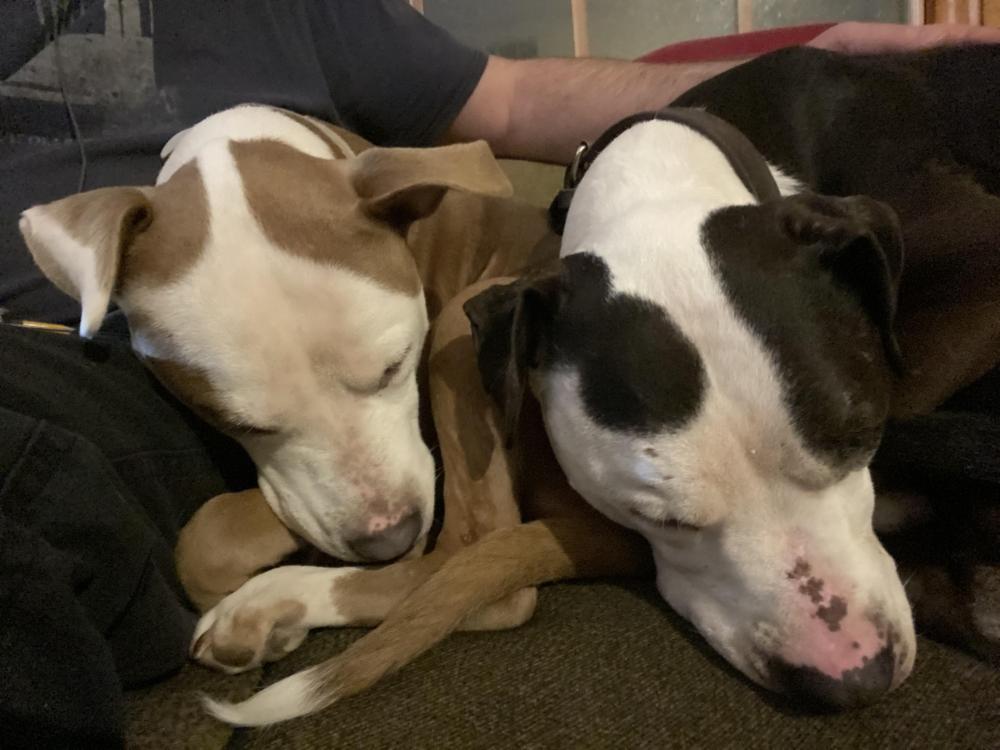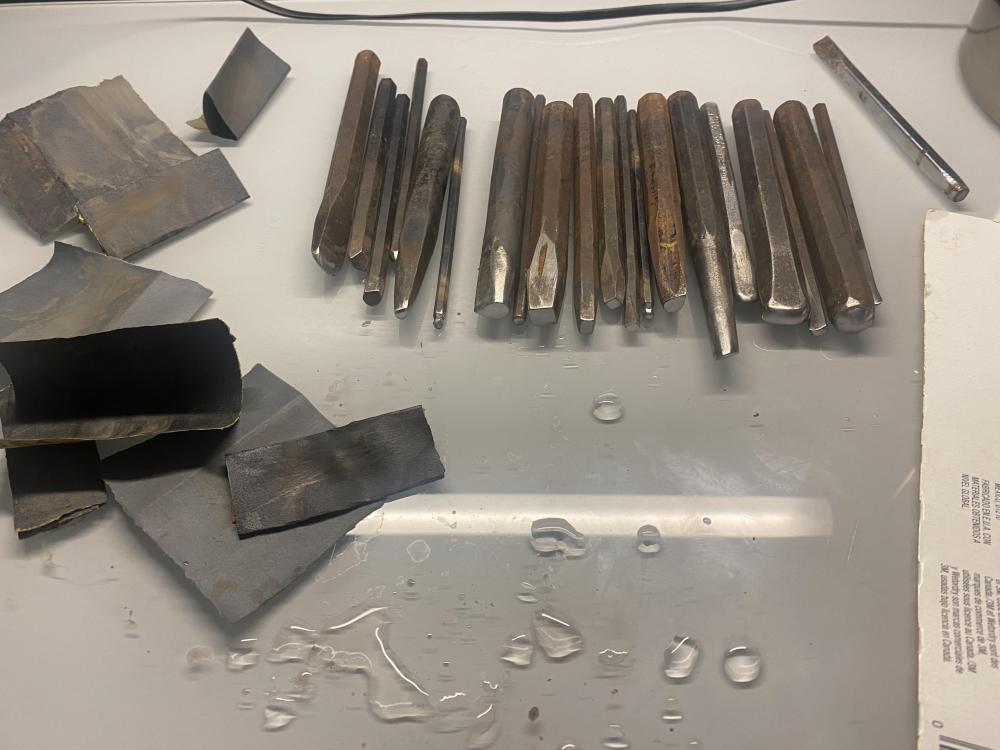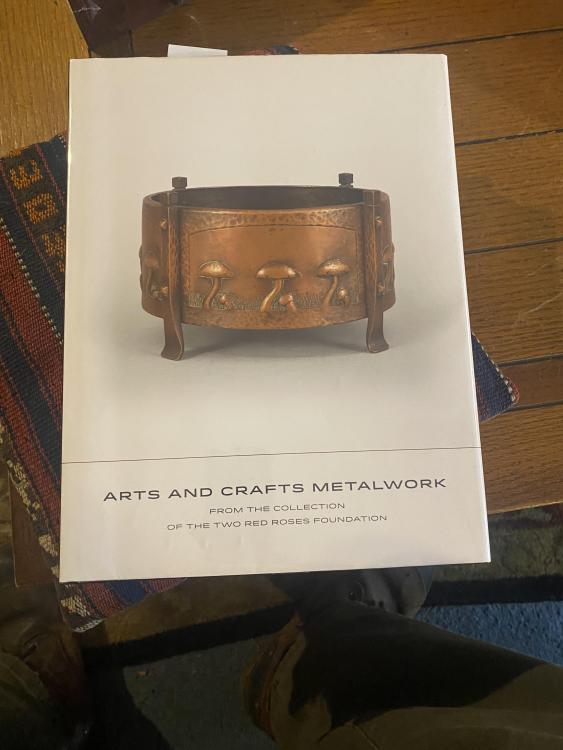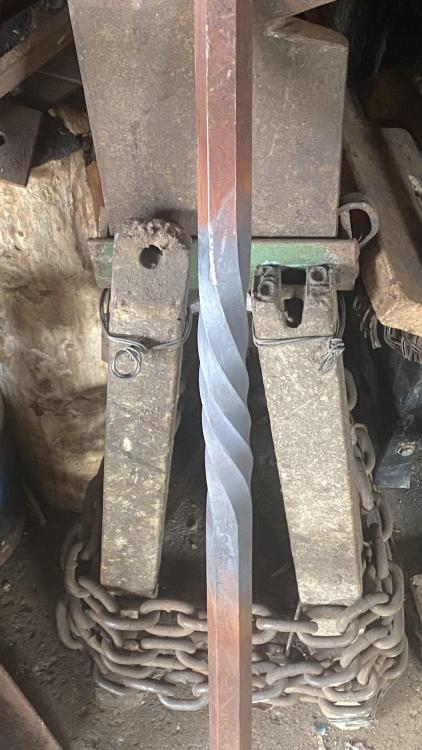-
Posts
19,433 -
Joined
-
Last visited
Content Type
Profiles
Forums
Articles
Gallery
Downloads
Events
Everything posted by JHCC
-
In those cases when I've had or been a striker for top-tool work (as well as when I've seen other smiths doing such work, either in person or on video), the cue has been verbal rather than visual. That is to say, the smith says something like "Hit" or "Go" rather than nodding, as the striker can keep their eye constantly on the tool rather than watching the smith. I know what you mean, but I'd rephrase that as "the little hammer models what the big hammer should do" or "the big hammer mimics what the little hammer does".
-

What did you do in the shop today?
JHCC replied to Mark Ling's topic in Blacksmithing, General Discussion
Two good catches: one safety, one hardware. -
Here's another view, without the highlights: I posted this on Facebook and tagged Aislinn Harris and Mark Sperry to ask what they do at CW. Here's Aislinn's reply: (My memory of the "striker needed" signal was off a bit, but close.)
-
This is an interesting code, and I can see how it would be useful in a shop where smith and striker are constantly working together and are both accustomed to this level of communication. On the few occasions I've worked with a striker, the only instruction I've used has been "Hit where I hit, hit harder when I hit harder and lighter when I hit lighter, and stop when I tap the anvil twice." When the Colonial Williamsburg blacksmiths demonstrated at Quad-State a few years back, they would signal to each other that they needed a striker by tapping the side of their anvil twice. They explained that in the shop at CW, there are no designated smith-and-striker teams, and whoever is free will respond to the signal.
-
The screech of cars colliding is one of my least favorite sounds. Glad no-one was hurt!
-

What did you do in the shop today?
JHCC replied to Mark Ling's topic in Blacksmithing, General Discussion
Progress on mounting brackets for the railing project. Also jury-rigged a sanding belt splitter out of two pieces of angle iron, three C-clamps, and an old sawzall blade: Which worked fine: -

What did you do in the shop today?
JHCC replied to Mark Ling's topic in Blacksmithing, General Discussion
Nice looking cleaver, Goods!! -

What did you do in the shop today?
JHCC replied to Mark Ling's topic in Blacksmithing, General Discussion
-
Mike, could you show us some photos or a sketch?
-
The shop at the Philadelphia College of Art where I first learned smithing had a substantial flue system that Jack Andrews had built some years previously. If memory serves, it had an in-line fan powered by a belt running from an externally mounted motor, so that the motor wasn't anywhere near the smoke or soot. It worked REALLY well, as we found out one morning when someone lit the fire without remembering to turn the fan on.
-

JHCC's consolidated Hossfeld Universal Bender #2 thread
JHCC replied to JHCC's topic in Cold Worked Iron and Steel
As previously noted, you're welcome to come use mine. Oh, forgot to mention: here are the elements of the current stair railing project after their initial Hossfelding. More to be done, but the radiused V-blocks worked great for basic bending. And here it is: a removable outboard stock support that hooks into the last hole in the main frame and rests on the circle guide. It's not perfect, but it keeps the pipe from slipping out of the tooling while you're setting up the bend. I'll call that a win. -

JHCC's consolidated Hossfeld Universal Bender #2 thread
JHCC replied to JHCC's topic in Cold Worked Iron and Steel
Another Hossfeld video, from a YouTuber who goes by "Mr. Tompkins". This is a narration-free demo of setting up and using the bulldozer die: The same YouTuber has another Hossfeld video, a super-basic demo of using the eye-bending tool to make a simple bend on thin stock. However, other than an interesting shot of his tool storage, it doesn't have anything not covered better in joe dal pra's video. -

What did you do in the shop today?
JHCC replied to Mark Ling's topic in Blacksmithing, General Discussion
Also sometimes called a "spider", although that term is also applied to a frying pan with attached legs. -
15N20 is not an AISI/SAE designation. Rather, that is the name of the steel given to it by the manufacturer Bohler-Uddeholm; I think the "N20" refers to its 2.0% nickel content.
-

What did you do in the shop today?
JHCC replied to Mark Ling's topic in Blacksmithing, General Discussion
-

What did you do in the shop today?
JHCC replied to Mark Ling's topic in Blacksmithing, General Discussion
Really bummed at myself for getting careless and ruining a wrought iron piece through poor temperature control: However, good progress on bending pipe for the current railing project: On a side note, multiple days of single digit (Fahrenheit) temperatures remind me of one benefit of a beer keg slack tub, given how they’re designed to withstand significant internal pressure: -
This is aircraft riveting rather than blacksmithing, but it's interesting and I know how people here love old-school industrial videos. (NB: for some reason (probably to avoid copyright issues), the film starts about a minute in, and the opening titles and voiceover have been inserted just before "The End". I've cued the video up to the actual starting point; just hit "Replay" once it reaches the end.)
-

What did you do in the shop today?
JHCC replied to Mark Ling's topic in Blacksmithing, General Discussion
Too cold to work in the shop (although it did get up to a balmy 7°F this afternoon), so stayed inside and did some design work. The dogs were unimpressed. -
Whoever built our house back in 1968 did something interesting with the kitchen lights (where we also have switched out the fluorescent bulbs for LEDs): there’s one switch that turns on everything, and then another that leaves everything on when it’s in the UP position and turns half of the lights off when moved to DOWN.
-
I have a few overhead lights with LED bulbs, plus a couple of task lamps with magnetic bases that I can position when and where needed. (Plus the flashlight on my cell phone for when I’m trying to find the thing that I just dropped. I swear, I was just looking right at it.)
-
Which equals expensive.
-

What did you do in the shop today?
JHCC replied to Mark Ling's topic in Blacksmithing, General Discussion
-

JLP Blacksmith Teaching Center.
JHCC replied to jlpservicesinc's topic in Building, Designing a Shop
I thought purple wires in church were for the circuits you only use during Lent. -
-

What did you do in the shop today?
JHCC replied to Mark Ling's topic in Blacksmithing, General Discussion
I have; in fact, I’ve got a good bit of it out in the shop that I got at HGR. There was a bin of it labeled “Shafting” which I purchased in the hope of using it for tooling, but it turned out to be unhardenable and sparks like mild steel. Here’s a chunk that I twisted as a test piece (for a project that later went in a different direction):
